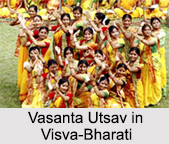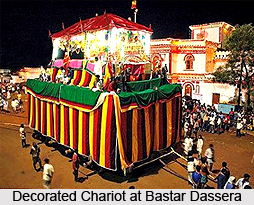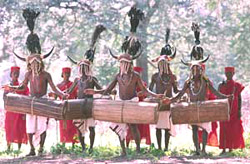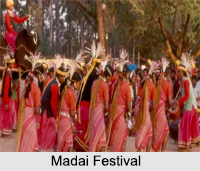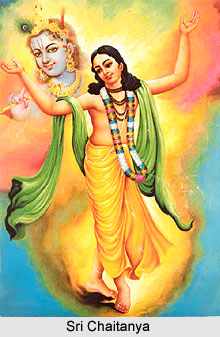 Dol Purnima is popular culture and tradition in the Indian state of West Bengal and Orissa. The festival is actually dedicated to Lord Krishna, and is marked with colours and enjoyment. On this auspicious day, an image of Krishna, richly decorated and besmeared with coloured powder, is taken out in procession, in a swinging palanquin, decorated with flowers, leaves, coloured clothes and papers. The procession actually moves forward to the accompaniment of music, blaring of conch shells, trumpets and shouts of `Jai` (victory).
Dol Purnima is popular culture and tradition in the Indian state of West Bengal and Orissa. The festival is actually dedicated to Lord Krishna, and is marked with colours and enjoyment. On this auspicious day, an image of Krishna, richly decorated and besmeared with coloured powder, is taken out in procession, in a swinging palanquin, decorated with flowers, leaves, coloured clothes and papers. The procession actually moves forward to the accompaniment of music, blaring of conch shells, trumpets and shouts of `Jai` (victory).
Dol Purnima actually becomes all the more important for Bengalis because this is also the birthday of Chaitanya Mahaprabhu (1485-1533). He was a great Vaishnava saint, who popularized modern sankirtana. He elevated the passion of Radha and Krishna to a high spiritual plane. He underlined the emotional at the cost of the ceremonial side of devotion. Followers of Chaitanya School of Vaishnavism believe Chaitanya to be the manifestation of Krishna. Chaitanya Mahaprabhu believed that the essence of sadhana is always the loving commemoration and memory of Hari.
According to puranas, this day is important for three reasons:
1. It was on this day that Lord Shiva opened his third eye and reduced Kama-deva to ashes.
2. It was on this day that Holika, the sister of the demon king Hiranyakashipu, who tried to kill the child-devotee Prahlada by taking him on her lap and sitting on a pyre of wood which was set fire to, was herself reduced to ashes, while Prahlada was unscathed!
3. It was again, on this day, that an ogress called Dhundhi, who was troubling the children in the kingdom of Prithu (or Raghu) was made to run away for life, by the shouts and pranks of the mischievous boys. Though she had secured several boons that made her almost invincible, this - noise, shouts, abuses and pranks of boys - was a chink in her armour due to a curse of Lord Shiva.
There are practically no religious observances for this day like fasting or worship. Generally a log of wood is kept in a prominent public place. People go on throwing twigs of trees etc on to that log which gradually grows into a sizeable heap. On the night just before the Phalguna-Purnima day, it is set fire to in a simple ceremony.
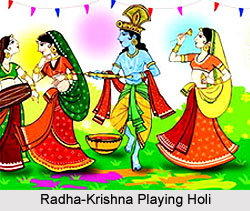 The next day, Phalguna-purnima, is observed as a day of revelry, especially by throwing on one another gulal (coloured powder) or coloured water.
The next day, Phalguna-purnima, is observed as a day of revelry, especially by throwing on one another gulal (coloured powder) or coloured water.
In Vrindavan and Mathura, where Lord Krishna grew up, the festival is celebrated for 16 days (until Rangpanchmi in commemoration of the divine love of Radha for Krishna). Lord Krishna is believed to have popularized the festival by playing pranks on the gopis here.
Bengal observes this festival as Dol-purima or Dola-yatra (the festival of the swing). The festival, said to have been initiated by the king Indradyumna in Vrindavan, is spread over 3 or 5 days, starting from the shukla-chaturdashi of Phalguna. A celebration in honour of Lord Agni and worship of Krishna in image kept on a swing (dola) are the important features.
The day is also celebrated as the birthday of Sri Krishna Chaitanya (A.D. 1486-1533), mostly in Bengal, as also Puri (in Orissa), Mathura and Vrindavan (in Uttar Pradesh).

